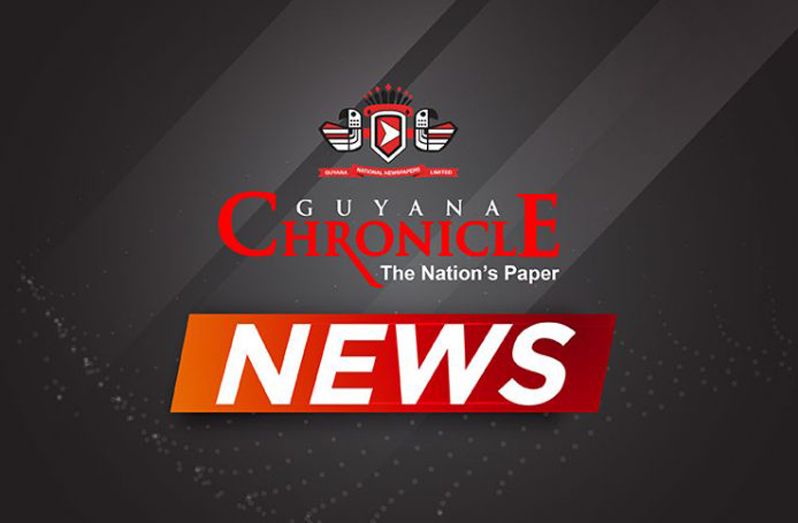‘It is plain incorrect for the new opposition to not factor in ‘financial viability problems’ as a variable in their equation to disseminate half-truths. Easing the colossal debt burden from 1992 was one of the most significant ameliorating factors to addressing the issue of financial viability’
THE PPP/C can now post four election victories to its belt since the restoration of democracy; and nowadays, there is the constant haggle and the slings and arrows of an outrageous traditional and new opposition, incensed that the PPP/C still holds the reins of government; juxtaposed with a populace demanding that this administration continues to advance the cause of equality, economic progress, and the power of the community to achieve the good life.
Nevertheless, the pundits of discord are aggressively at work again, booting up and restarting the myth wagon that the PPP/C Administration is an elected dictatorship and an elected oligarchy. They need to make up their minds here, as to which one it is.
Sometimes the new opposition conveniently forgets that the PPP/C Government inherited a logistical nightmare in 1992. This Administration then had to grapple with numerous constraints; this story is now well known, so I will refrain from presenting any pre-1992 and post-1992 elections violence tidbits. And indeed, there is the question of financial viability that plagued Guyana for about 10 years from 1992.
It is plain incorrect for the new opposition to not factor in ‘financial viability problems’ as a variable in their equation to disseminate half-truths. Easing the colossal debt burden from 1992 was one of the most significant ameliorating factors to addressing the issue of financial viability.
The enormous funding necessary to rehabilitate and reconstruct the inherited ailing social and economic infrastructure was unavailable within the Treasury. The foreign debt burden was of such immense proportions, that reducing its size became mandatory, while at the same time making funds available for the social services sector, such as health and education.
Nevertheless, critics still conclude today that the applications for debt relief constituted global begging. These people are naïve about administering a national economy, and short on practical details on how to improve the social services sector amid financial incapacity and a huge debt burden.
In order to move Guyana progressively forward, the PPP/C Administration very quickly realised that the traditional debt relief mechanisms (concessional lending, rescheduling, loans) were inadequate to achieve sustainable external debt levels.
The government, therefore, aggressively sought out the more progressive debt relief packages. The PPP/C Administration moved quickly and timely to be the recipients of substantial debt relief that compared favourably with the 77 countries eligible for the Poverty Reduction and Growth Facility at the end of February 2001.
A few explanations for these debt mechanisms follow. Prior to 1996, concessional lending was the norm in providing financial aid to developing countries. Notwithstanding these favourable terms, many poor countries experienced problems making their debt payments, as many of them did not achieve appropriate growth rates in subsequent years. There, therefore, was a need to introduce new ideas and mechanisms. Believing that the debt service difficulties of poor countries were temporary, the French Treasury invited creditor governments to form a committee to reach a consensus on the debt relief needed for poor debtor countries, and to ensure that all creditors offered similar terms as agreed by the committee. This committee became known as the Paris Club. Guyana benefited, but needed more help in reducing debt service payments, in order to achieve sustainable growth and poverty reduction.
Nonetheless, by the mid-1990s, it was clear that the traditional debt relief packages were not succeeding, as they were still insufficient to reduce debt to sustainable levels. In 1996, the International Monetary Fund (IMF) and the World Bank presented the Initiative for Heavily–Indebted Poor Countries (HIPC). The HIPC Initiative was set up to solve debt problems of the heavily-indebted poor countries which had a total debt of US$200 billion. Also, the HIPC Initiative made funds available to social sector programs, especially basic health and education.
There was a modified HIPC Initiative in 1999 to give faster, deeper and broader debt relief and reinforce the connections between debt relief and policy reforms to increase long-term growth and achieve poverty reduction. This modification initiated the Poverty Reduction Strategy Paper (PRSP), approved by the World Bank and the IMF in 1999 as part of the Enhanced-HIPC.
In order to be considered for HIPC assistance, a country must experience an unsustainable debt burden, and have a track record of reform and good policies as determined by the IMF and the World Bank. Then a debt sustainability analysis occurs to determine the current external debt. If the existing external debt ratio for the applicant country exceeds 150 percent of the net present value of the debt to exports, it will qualify for HIPC assistance. The next stage, the Decision Point, determines the country’s eligibility to request assistance.
Here, an eligible country will have to adopt, in addition to the IMF and World Bank-supported structural reforms, a Poverty Reduction Strategy Paper (PRSP), using a national participatory process, by the Decision Point.
Guyana’s adoption of the PRSP brought it to the Decision Point. In fact, Guyana already was at the Decision Point when it developed the Interim-PRSP which presented the Government’s plans to develop a PRSP.
Reaching the Decision Point of the Enhanced HIPC Initiative meant that Guyana became eligible for debt relief of US$590 million for the next 20 years. Guyana previously received US$440 million under the original HIPC Initiative.
At this Decision Point, the Executive Boards of the IMF and the World Bank will make a determination on the country’s eligibility. Here, the country will continue to receive financial aid until the process reaches the Completion Point. At this stage, implementation of the PRSP happens.
Guyana continues to benefit from HIPC. At the end of 1999, Guyana’s debt stock was reduced to US$1.1 billion from US$2.1 billion in 1992, and since it reached the Decision Point in the HIPC process, the estimate is that this foreign debt will see further reduction to US$800 million.
According to Panos (2002), Guyana’s expected debt payment without HIPC in 2005 was US$103 million and with HIPC US$43 million per year. Keep in mind that debt payments in Guyana in 1992 were about 105 per cent of government revenue, 50 per cent of exports, and implications of the invasive financial viability problems between 1992 and 2000.
The Guyana Government continues to score masterfully through its debt relief and securing investments within a global economy slowed down by recession. The social services sector, especially health and education, received a sustained boost via HIPC. At the Cochabamba Summit in 2006, President Bharrat Jagdeo got the South American Community of Nations’ backing of a motion asking the IDB for 100 percent debt relief of Guyana’s stock of debt with December 2004 as the cut-off point, effective from January 2007; this relief amounted to US$467 million.
Debt reliefs are a booster to government’s public expenditures on education as a percentage of the National Budget, thus, 15.1 (2008),17.1 (2007); 13 (2006); 8.12 (2005), 15.5 (2004), 14.4 (2003), 18.2 (2002), 16
.5 (2001), 11.7 (2000), 11.6 (1999), 11.9 (1998) 6.8 (1997), and 7.3(1996); and the growth percentages for health follow: 9.3 (2008), 10.6 (2007), 9.0 (2006), 7.5 (2005), 9.5 (2004), 8.9 (2003), 8 (2002), 7 (2001), 5.7 (2000), 6.7 (1999), 5.9 (1998), 7.3 (1997), and 6.3 (1996).
Guyana had to step up to the plate to meet scrupulous HIPC and other donors’ eligibility requirements to secure debt reliefs.
Acknowledgements: several IMF & Jubilee documents in explaining the HIPC Initiative process. (¬Previously published in the Guyana Chronicle)
Feedback: pmperspectives@aol.com; themisirpost.wordpress.com




.jpg)










